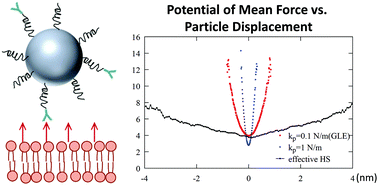Adhesion of a polymer-grafted nanoparticle to cells explored using generalized Langevin dynamics
Abstract
We model a polymer-grafted stealth nanoparticle (SNP) as a composite system consisting of a spherical core coated with a porous polymeric brush with end-ligands. Adjacent to target cells, the near-wall hydrodynamics, thermal fluctuations, and thermodynamic adhesive interactions simultaneously impact the transient motion of the SNP. Employing both the Langevin framework for the effective hard sphere dynamics and the coupled generalized Langevin framework for the nanoparticle–polymer dynamics, we comprehensively investigate the velocity and position temporal relaxations of the SNP in the absence and presence of end-to-end distance fluctuations for the tethered polymer. We demonstrate that polymer structural relaxations substantially impact the SNP adhesive dynamics, especially when the grafted polymer is more flexible. Moreover, a long-time tail with t−3/2 scaling due to polymer chain-length fluctuations is observed in the velocity autocorrelation for a bound SNP. Finally, the thermodynamic effects of membrane morphology on SNP adhesion are explored by modifying the membrane-mediated binding potential of mean force.



 Please wait while we load your content...
Please wait while we load your content...